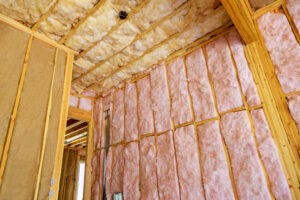Caulk gaps and cracks in windows
Last updated on March 10th, 2024 at 03:37 pm
Caulking is a great, quick and efficient way of plugging holes around windows. In fact, if you buy the correct caulk for the situation it can plug up nearly anything!
Caulking is one of those repairs that will save you money year round, no matter what the season. It forms a nice, tight seal around problem areas and prevents air, warm or cold, within the house from escaping to the outdoors. So heated air stays in the house in winter, and cooler air is retained where it is needed most in the summer.
There are quite a few advantages to using caulk to repair windows:
- Can be permanent
- Flexible once installed
- Relatively inexpensive
- Available in a variety of brands and colors
- Some can be painted on for a better match with the window
- Durable with good insulating qualities
- Can be used to fill larger gaps or holes
- Can expand and contract more readily, still providing a seal
With any advantages, I like to give you a few downsides to better even it out for you so you can make the best decision. So here are the disadvantages to caulking:
- Can require extensive drying or curing time
- Need a caulk gun (But it’s less than $5)
- Some are not very easy to remove once applied
- More involved installation than other methods
- Can get very messy if you’re not careful
- While drying, most have an unpleasant odor
- As with all chemicals, its best to read the labels before purchasing or applying.
Most caulk can be used inside or outside, and have excellent temperature resistance. I’d recommend a weatherproofing caulk for instances where you might want to use the same tube inside and out. Otherwise, its best to get a silicone based caulk since these can be painted on.
If you’re planning on caulking outside, a polyurethane caulk is usually recommended, since it has superior sticking power but never fully hardens, so it remains flexible. There isn’t too much shrinking with them and they tend to last a long time.
Caulk works best when filling a hole or gap less than ½ inch wide. If the gap is wider, try stuffing the hole with fiberglass insulation (or other insulative material, like heavy foam) and then caulking over that. This is recommended for deep cracks as well. You don’t generally want to leave a gap or hole anywhere where there orginally was a problem.
Read the labels on the caulk tubes, and consult your friendly associate at your favorite home improvement store if you need help deciding which tube is right for you.
If someone asked me to recommend one single repair or tip that would do the most good in terms of saving heat, this would probably be it. Plugging gaps and leaky windows will make a tremendous difference you will be able to feel and see.


